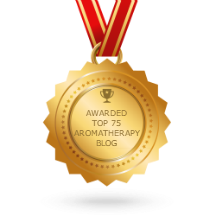By Christi R. Pugh
For Nature’s Gift, Inc.
We recently heard from two longtime clients, who posed an
interesting and important question: “What is the therapeutic shelf-life of an
essential oil?” A follow-up to the question would be: “If the oil is past its
therapeutic shelf-life, does it have any other uses?”
Shelf-life of essential oils truly varies from product to
product. A few precious oils even improve with age, such as: Sandalwood,
Patchouli, Vetiver, and other rich, resinous oils. However, as you may be
aware, cold-pressed Citrus oils and some Conifers (needle oils) have a much
shorter shelf life. As a general rule, these oils run their course in 6 months
to one year. (Pink Grapefruit, Sweet Orange, Lemon Rind, Pines, Firs, Spruce,
etc.)
There are several key factors to consider:
1) Always, always, always, store in a cool, dark place, and
yes, it is okay to store essential oils in the refrigerator. We store all of
our Citrus and Conifer oils in the fridge at Nature’s Gift AND use a nitrogen
blanket to prolong shelf life.
2) Topping off oil bottles with a nitrogen blanket like our
Oxygen Barrier, prevents oxidation, and extends the shelf life of any essential
oil. Tighten tops well.
3) If you prefer not to use Oxygen Barrier, transferring
the oils to smaller dark colored bottles like our cobalt or amber bottles can
also be helpful. You are trying to eliminate any extra head “room” between the
oil and the bottle or the chance for oxidation.
Okay, so your fabulous Pink Grapefruit is over a year old
because you completely forgot about it. What now? Well, even if it still
smells lovely, it is probably not going to offer the therapeutic benefits it
once did.
In fact, I found a bottle of Pink Grapefruit under my car
seat that fell and lodged there about three years. I opened it and to my
surprise, it still smelled great. However, I ended up using it with soap and
water to wipe down my stove and kitchen counters and put a tad in a clay pot
diffuser in my laundry room, mainly just for the smell. I never ever let any
oil go to waste. I add older ones to cotton balls and place them in strategic
locations (drawers, cabinets, closets) and I also use them for mopping my
floors. (A few drops added to hot water and Murphy’s Oil Soap)
Unlike Carrier Oils, essential oils don’t really turn
rancid, so that is not a way you can tell if the oils are still “good” or not.
However, as Marge says, you can just tell sometimes, because they somehow smell
“off.” Maybe they are not as bright and vivid in aroma as they once were. One
way to know is to mark dates on the oils once they come into your possession.
This will eliminate the guessing game. If you pour the oil into clear glass,
you may see it has a cloudy effect. This is also a tell-tale sign an oil is no
longer therapeutically beneficial. Other essential oils have a shelf life
ranging from one to five years.
We’ve been asked why we do not put an expiration date on
our retail essential oils. The reason is simple. We do not know what
conditions the oil will be stored under once it leaves our hands, thus, making
it impossible to calculate a true expiration date. Other than what we’ve
discussed here, there is truly no firm expiration date for essential oils.




No comments:
Post a Comment